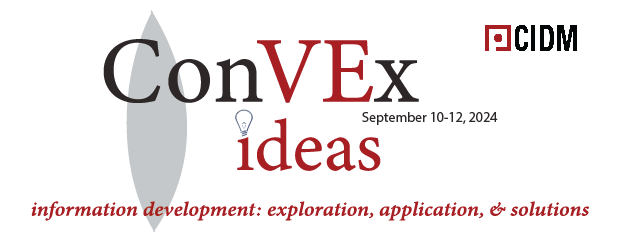The Effect of the Structure of Electronic Document Collections on Information Retrieval Success: Project Overview and Toolkit
Presentation Abstract
Research question: “Does a move to a topic-based architecture in an online documentation collection reduce the time it takes for users to locate information in that collection?” Fiona Hanington will describe the design of this research project.
What can the audience expect to learn?
We are planning a research project to address a gap in the existing body of research into documentation usability. Specifically, our review of the literature revealed that there has been very little quantitative data gathered about whether a topic-based architecture — a recent trend in the technical communication (TC) discipline — reduces the amount of time that it takes for end users to locate information in an online documentation collection (Chapman, 2008). Research into this question is important because any large-scale change to information architecture is time-consuming and costly, especially for companies with large legacy document collections (Anderson, 2011). Decision makers must have a clear view into all the benefits of such a change before they allocate budget.
Our research question is as follows:
“Does a move to a topic-based architecture in an online documentation collection reduce the time it takes for users to locate information in that collection?”
To address this question, we intend measure the length of time it takes for representative users to to retrieve information in a controlled environment, as a function of the structure of the documentation collection being accessed.
Participants will be asked to perform a similar set of tasks in two different documentation collections. The first, which serves as the control, is the existing document collection, The second contains the same information, but reorganized to comply with the principles of topic-based architecture. Note that the two documentation collections are identical in size, subject matter, formatting, user interface conventions, and information content, but differ in structure and organization.
For the online conference, we propose to describe our research design:
– Methodology
– Sampling design
– Data analysis methods
– Ethical issues
– Study applications
– Researcher toolkit, which includes timelines, data-collection forms, letters and questionnaires for subjects, task sets, etc.
– Summary of our literature review
Meet the Presenter
 Fiona is an information architect at Ericsson. Her main responsibility over the past two years has been to lead the development of Ericsson’s global information model for customer documentation in preparation for a move to DITA and a CCMS. Fiona recently completed an MLIS at the University of British Columbia with a focus on information architecture. Along with fellow student Chris Blanton, Fiona designed the study presented here as part of MLIS coursework in 2014. She intends to conduct the study at Ericsson in 2016.
Fiona is an information architect at Ericsson. Her main responsibility over the past two years has been to lead the development of Ericsson’s global information model for customer documentation in preparation for a move to DITA and a CCMS. Fiona recently completed an MLIS at the University of British Columbia with a focus on information architecture. Along with fellow student Chris Blanton, Fiona designed the study presented here as part of MLIS coursework in 2014. She intends to conduct the study at Ericsson in 2016.
